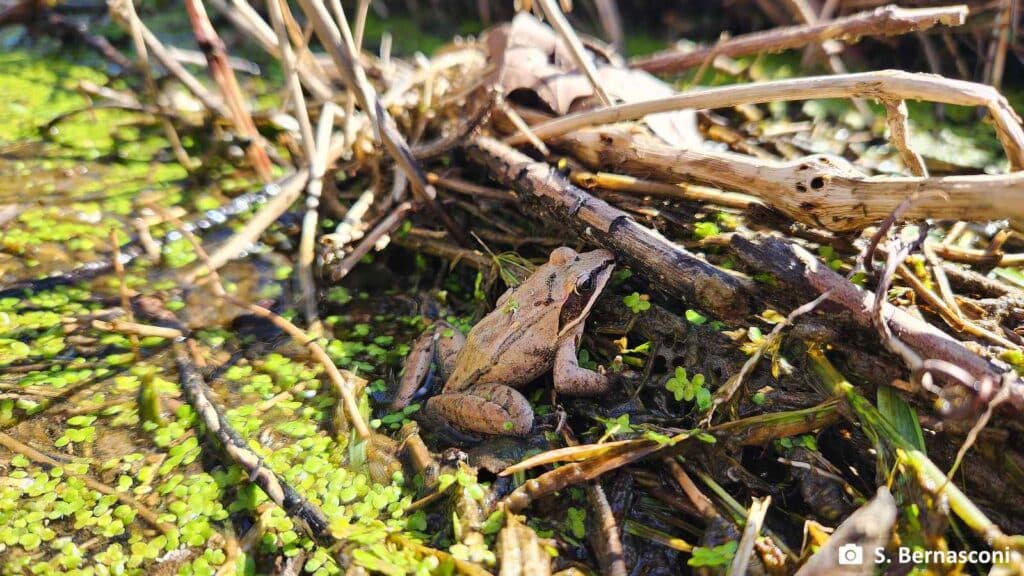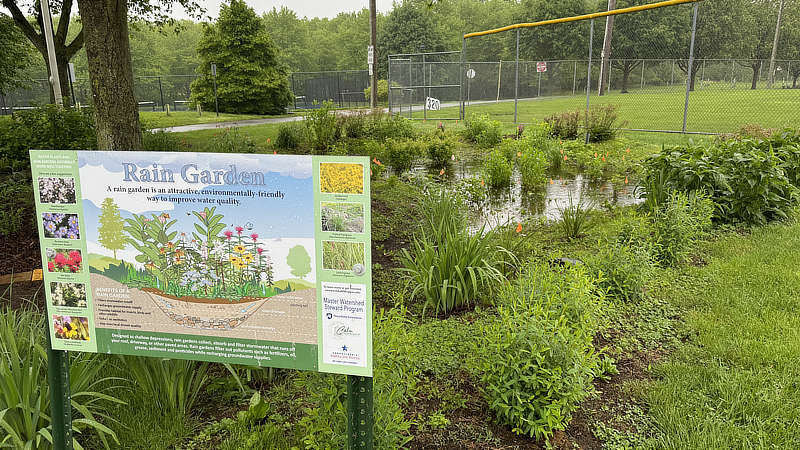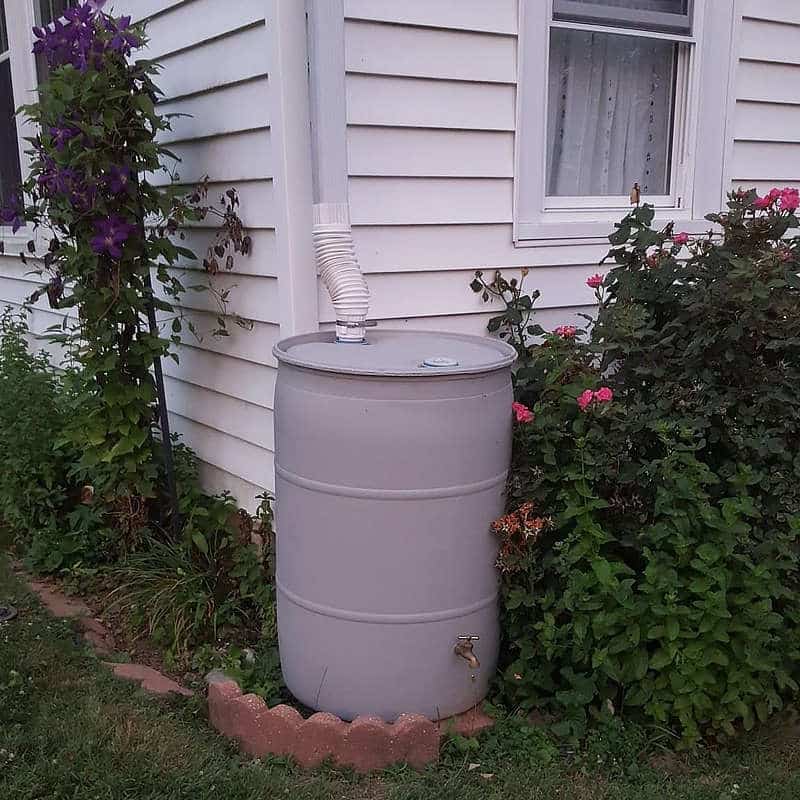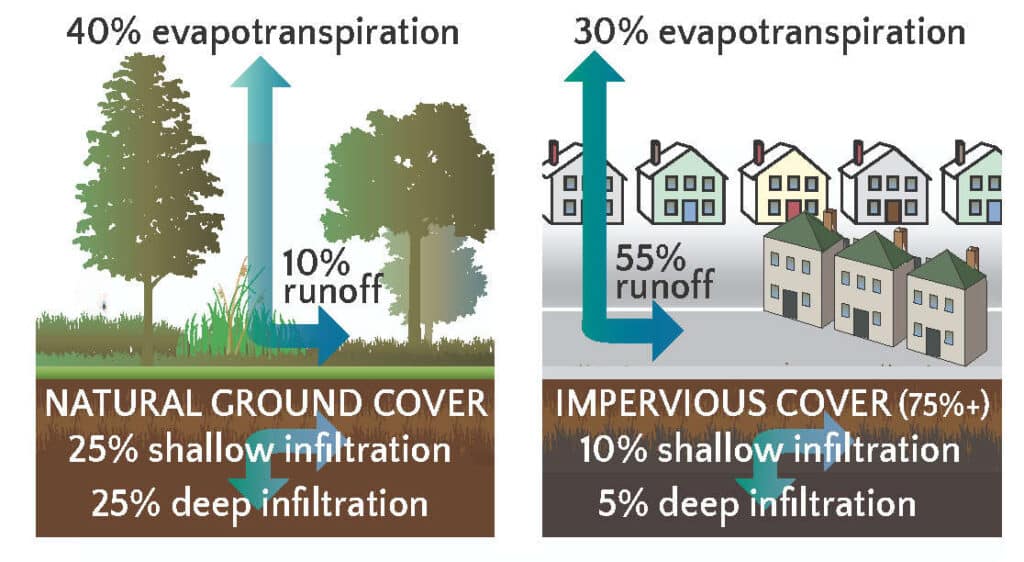By Teresa Avery, Penn State Extension Master Watershed Steward volunteer
According to the Pennsylvania Department of Environmental Protection’s Integrated Water Quality Report, more than 30% of Pennsylvania’s stream miles are impaired. A waterway is considered impaired if it fails to meet one or more water quality standards.
Fortunately, there is a bright side to this sobering statistic: Property owners in Pennsylvania — and around the world — can significantly impact the health of their local watersheds through simple, at-home actions that work well with their lifestyles. These steps may reduce pollution and improve water quality, help slow stormwater flow, and support wildlife and pollinators.

Reduce Runoff to Keep Pollutants Out of Streams
Reducing stormwater runoff is a significant concern because of its potential damage to roadways and homes. Flowing stormwater sweeps pollutants found on the ground into local waterways. By taking steps to slow the water down, property owners give it a chance to seep into the groundwater instead, which helps filter pollutants and reduce damage to the watershed.
Water can’t filter down into the ground if it can’t reach the soil, so thinking strategically about where and how many impervious surfaces a property includes is a significant first step to reducing stormwater flow. An impervious surface is simply an area covered by a material that water can’t penetrate. Examples are roofs, concrete sidewalks, asphalt driveways, and other areas we use in our daily lives.
Eliminating all impervious surfaces isn’t possible, but homeowners may be able to make choices to reduce impervious surfaces in some areas of their property. Using rain barrels can also help retain some of the stormwater that flows from roofs while providing a potential source for future garden watering needs. In addition, rain gardens carefully planted in areas where stormwater tends to collect may help slow the water and encourage it to filter down into the soil rather than continue flowing across the land.


Plant Trees and Other Deep-Rooted Plants
The presence of trees whose canopies stretch over impervious surfaces may also help redirect stormwater into the ground. Tree leaves and branches intercept some of the falling rainwater, which then either evaporates from the leaves or flows down the branches and trunk of the tree, penetrating the soil and following the tree’s deep root system.
According to Clemson Cooperative Extension’s Home & Garden Information Center, trees may be particularly important for managing urban and suburban environments:
“The more trees in an area, whether it’s an urban or rural setting, the less runoff generated that is capable of transporting pollutants. And since there are generally more pollution sources in urban areas, trees are especially important there. Trees can filter pollutants both out of the water that moves through their cells and out of the air.”
No matter where you live, choosing plants with deep roots can help slow stormwater flow. These types of plants help aerate the soil and give water a better chance to filter down, and the depth of the roots means that water can be drawn deeper into the groundwater. Native plants often have strong, deep root systems well adapted to their regions.

Give Stormwater Fewer Pollutants to Pick Up
While these steps can help slow stormwater runoff, it’s not possible to stop it entirely. Property owners can further help support their local watersheds by reducing the pollutants they use so stormwater has less pollution to pick up. Simple steps include minimizing the use of pesticides, picking up trash, and properly disposing of animal waste.
In Pennsylvania, revisions to the state’s fertilizer laws in 2022 meant new responsibilities for residents who might choose to use fertilizer. State residents should read the specifics of the law carefully before using fertilizer and follow these precautions:
- Don’t add fertilizer unless a soil test indicates that it is needed.
- Don’t use fertilizer near waterways.
- Carefully follow fertilizer labels for correct application rates.
Even just regularly picking up your dog’s poop can make a positive impact. According to the U.S. Department of Agriculture, dog waste can contain nitrogen and phosphorus that deplete oxygen and encourage harmful algae growth in waterways. It can also be a source of disease-causing bacteria, like fecal coliform.
Use Deicers Responsibly
Another common component of our daily lives that can negatively impact the health of our watersheds is that winter staple, deicer. According to Penn State Extension, our collective use of road salt and deicers has grown exponentially over the decades and now stands at about 123 pounds annually for every American. The chloride in these products poses a serious risk to surface water, groundwater, and aquatic wildlife.
Penn State Extension offers these tips when using deicing chemicals on your property:
- Follow the label directions so that no extra product is used.
- Sweep up extra salt and reuse it.
- Spread deicer before ice and snow begin to accumulate.
- Consider alternatives to deicer for small or thin areas of ice.
Green-dyed road salt on a walking path in Fairfax County, Va. Photo: famartin, CC BY-SA 4.0
Everyone Can Make a Difference

For Pennsylvania residents, the Watershed-Friendly Property Certification program helps property managers and owners learn how to support healthy watersheds and educates whole communities about the importance of watershed health.
Created through a partnership between the Penn State Extension Master Watershed Steward program and the Nurture Nature Center of Easton, Pennsylvania, the program is funded in part by the Pennsylvania Department of Environmental Protection’s grant programming. Anyone who owns or rents anything from a small apartment to more than 15 acres can participate.
Pennsylvania residents who want to complete the certification can visit the website to learn all the details and complete a questionnaire.
The program provides extensive resources of interest to anyone, nearly anywhere, who wants to make a positive impact in their watershed.
Did you know? Penn State Master Watershed Stewards have consistently proven to be some of Stroud Water Research Center’s most knowledgeable, active, and consistent volunteers. Through their partnerships with the Stroud Center and other organizations, they plant trees, remove invasive species, collect water quality data, and communicate ways local governments can better manage water resources.



